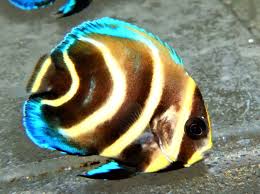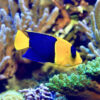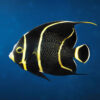Exploring Traditional and Contemporary Elements in the Reimagining of the Chinese Dragon

The Chinese dragon is one of the most iconic and enduring symbols in Chinese culture, deeply woven into the nation’s mythology, art, literature, and history. Known for its benevolent nature, power, and ability to control natural forces like water, the dragon has evolved over thousands of years, adapting to both the changing political landscape and the advancements in art and culture. From ancient mythology to modern depictions, the image of the Chinese dragon has undergone transformations that incorporate both traditional elements and contemporary influences. This article will explore the interplay between traditional and contemporary elements in the reimagining of the Chinese dragon, examining its enduring symbolism, its representation in art and culture, and how it continues to evolve in modern times.
The Symbolism of the Chinese Dragon
Before delving into how the dragon has been reimagined, it is important to first understand its deep-rooted symbolism in Chinese culture. The dragon is primarily associated with strength, power, good fortune, and prosperity. Unlike the fearsome, fire-breathing dragons of Western mythology, Chinese dragons are benevolent and regarded as protectors of the people. These creatures are believed to have control over weather patterns, particularly rain, which is essential for agriculture, making them critical to the prosperity of the empire.
In traditional Chinese cosmology, the dragon is also associated with the Emperor, who was considered the “Son of Heaven” and the earthly representative of the divine. As such, the dragon became a symbol of imperial authority, reflected in the phrase “Dragon Throne” used to describe the Emperor’s seat. This connection between the dragon and the ruler reinforced the idea that the emperor had the celestial right to govern, with divine approval.
Traditional Depictions of the Chinese Dragon
Traditional depictions of the Chinese dragon are characterized by several iconic features that differentiate it from other dragons in global mythologies. The Chinese dragon is often shown as a long, serpentine creature with the body of a snake, the antlers of a deer, the claws of an eagle, the scales of a fish, and the face of a camel. Its body is typically covered in dragon scales that give it a powerful, majestic appearance. Traditionally, Chinese dragons are shown flying through the sky or swimming in rivers and oceans, symbolizing their command over both land and water.
In ancient China, dragons were often used in imperial art, such as ceramics, textiles, and architecture. For example, on the Imperial Dragon Robe, the emperor’s attire was decorated with dragons embroidered in gold thread, symbolizing his imperial status and divine connection. The use of dragons in these royal items was not only a sign of wealth and status but also a way of communicating the emperor’s connection to heaven and his right to rule.
The most well-known traditional Chinese dragon is the Liulong, or “Five-Clawed Dragon.” This dragon was specifically reserved for the emperor, symbolizing the highest form of authority and celestial favor. The Five-Clawed Dragon was prominently featured in imperial seals, royal flags, and architectural decorations, often carved into the walls of palaces and temples. Its regal form and complex features made it a symbol of the Emperor’s connection to both heaven and the earth.
The Evolution of the Dragon’s Image in Modern Times
While the traditional Chinese dragon remained an enduring symbol of imperial power and good fortune, its image began to change with the advent of modernization, global influences, and evolving Chinese society. The image of the dragon in contemporary times blends elements of the old with new interpretations, reflecting the cultural shifts and global exchanges that have shaped modern Chinese identity.
The Chinese Dragon in Contemporary Art
In contemporary Chinese art, the dragon has been reimagined as both a symbol of tradition and a subject of creative expression. Modern artists continue to draw inspiration from the rich history of the dragon, but they also infuse it with new ideas, meanings, and aesthetics. Traditional images of the dragon are often combined with abstract elements, vibrant colors, and modern design techniques.
For example, in the Chinese New Year celebrations, which feature large, colorful dragon parades, the dragon is often depicted as an enormous, serpentine puppet carried by multiple individuals. This modern dragon, while still reflecting traditional features, is made from lightweight materials like cloth and bamboo, showcasing a blend of old and new techniques. The dragon dances during these celebrations are often accompanied by fireworks and loud music, turning the traditional symbol of the dragon into a modern spectacle of cultural pride and joy.
Another area where the dragon’s image has evolved is in contemporary fashion. Designers incorporate dragon motifs into their collections, but instead of traditional embroidery, they might opt for sleek, minimalistic designs using contemporary textiles. These designs keep the symbolic meaning of the dragon alive while adapting it to modern tastes and trends. Similarly, tattoo art in China and across the world has adopted the dragon as a popular motif, where it is reimagined in various styles, from detailed realism to stylized, minimalistic tattoos. These modern depictions often incorporate new cultural references, such as blending the dragon with other modern symbols, creating a fusion of old and new.
The Dragon in Popular Culture
Beyond the realm of fine arts, the image of the Chinese dragon has continued to evolve in popular culture, where it has been depicted in everything from movies to video games. Hollywood films, for example, often portray dragons as fearsome creatures, drawing inspiration from Western depictions. However, some films, particularly those that focus on Chinese culture, have made efforts to portray dragons in a more traditional light, emphasizing their benevolent nature, their association with power, and their ability to control the elements.
One notable example is the 2019 Disney movie “Mulan”, where a dragon named Mushu is featured as a comedic sidekick. While Mushu is depicted humorously in this movie, his role as a dragon still reflects the traditional symbolism of protection and strength. Though the portrayal of Mushu differs from the traditional Chinese dragon, the character still serves as a reminder of the deep cultural associations that dragons hold within Chinese society.
In the digital age, the dragon also appears in video games and animated series that blend traditional folklore with futuristic settings. Games like “World of Warcraft” and “League of Legends” feature dragons that combine elements of Chinese mythology with modern fantasy concepts. These dragons are often powerful and mythical beings that continue to represent strength and magic but are also adapted to the needs of contemporary storytelling and gameplay mechanics.
The Role of the Dragon in Urban Spaces and Architecture
As China modernizes, the dragon continues to appear in urban design and architecture, albeit in more contemporary forms. In the bustling cities of China, modern structures often blend traditional Chinese motifs with cutting-edge designs. The Dragon Gate in Xi’an is a prime example, where the traditional image of the dragon is integrated into the urban landscape as a symbol of good fortune and protection. These modern structures often reinterpret the dragon’s form in abstract, geometric designs, making the ancient symbol relevant to the fast-paced, dynamic environment of modern China.
Additionally, Chinese architecture worldwide often features dragons as decorative elements. In Chinatown districts across the globe, for example, traditional Chinese dragons can be found on building facades, street lamps, and gateways, serving as cultural markers that celebrate Chinese heritage while adapting to new, globalized settings.
Fusion of Traditional and Contemporary Elements in the Dragon’s Representation
The fusion of traditional and contemporary elements in the representation of the Chinese dragon is a reflection of the broader shifts in Chinese society. In a rapidly globalizing world, the dragon remains a powerful symbol that connects modern China to its ancient roots. Whether in art, fashion, architecture, or popular culture, the dragon has adapted to the times while retaining its deep cultural significance.
The modern reimagining of the dragon does not diminish its traditional meaning but rather enhances its relevance in a changing world. Contemporary depictions of the dragon may alter its appearance or function, but they continue to uphold its symbolic role as a protector, a symbol of imperial power, and a representation of strength, wisdom, and prosperity. The dragon, as an ancient mythological creature, shows that while traditions evolve, their core meanings endure across time and generations.
Conclusion
The Chinese dragon is a symbol that transcends time and cultural change, embodying both the past and the future. The blend of traditional and contemporary elements in its portrayal reflects how Chinese society has evolved while maintaining a deep connection to its cultural heritage. As China continues to modernize, the dragon’s enduring presence in various forms of art, fashion, architecture, and popular culture ensures that it will remain an iconic and powerful symbol of China’s rich history and dynamic future. Whether through traditional murals or modern digital renditions, the Chinese dragon remains a symbol of strength, protection, and prosperity, adapting itself to the demands of a globalized world while retaining its cultural significance.

